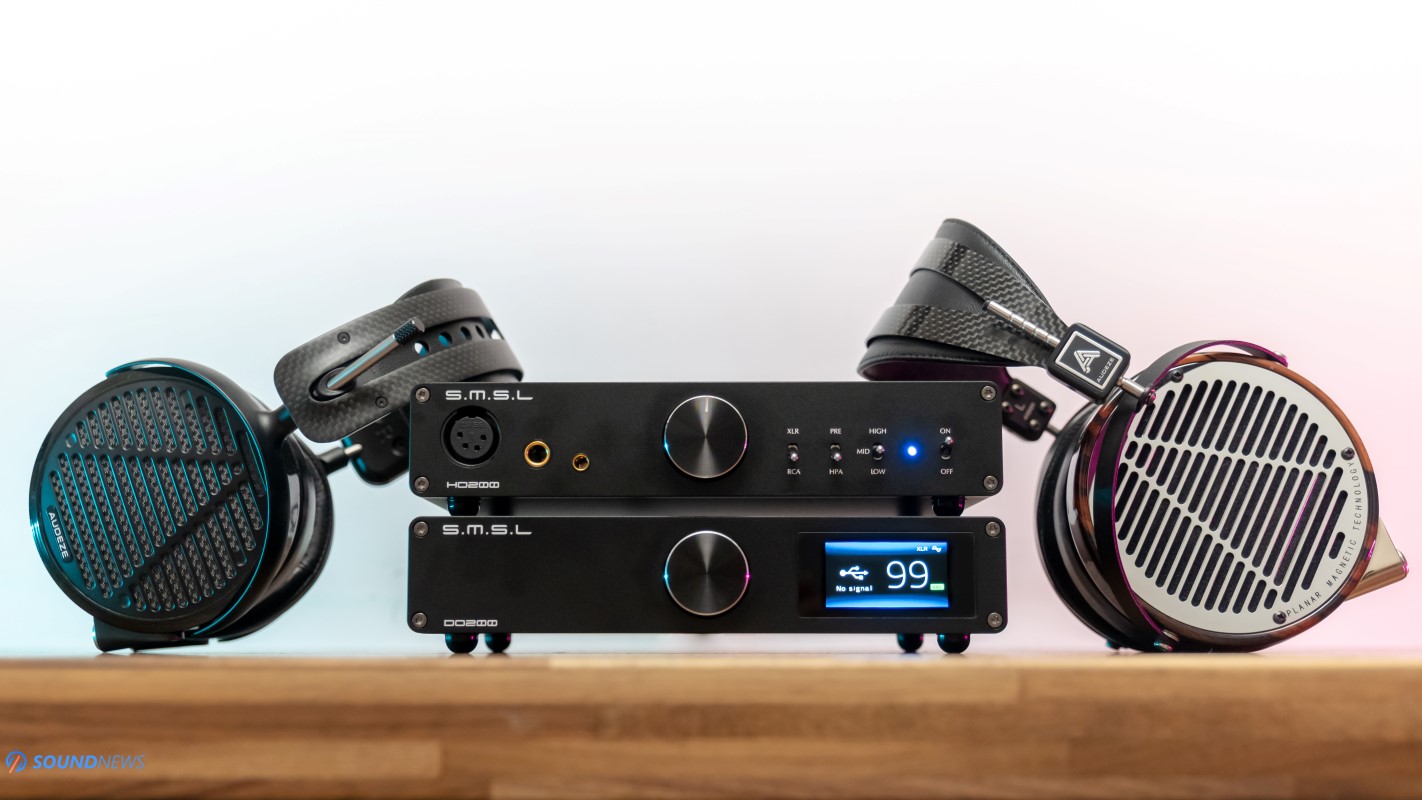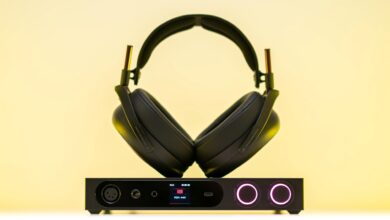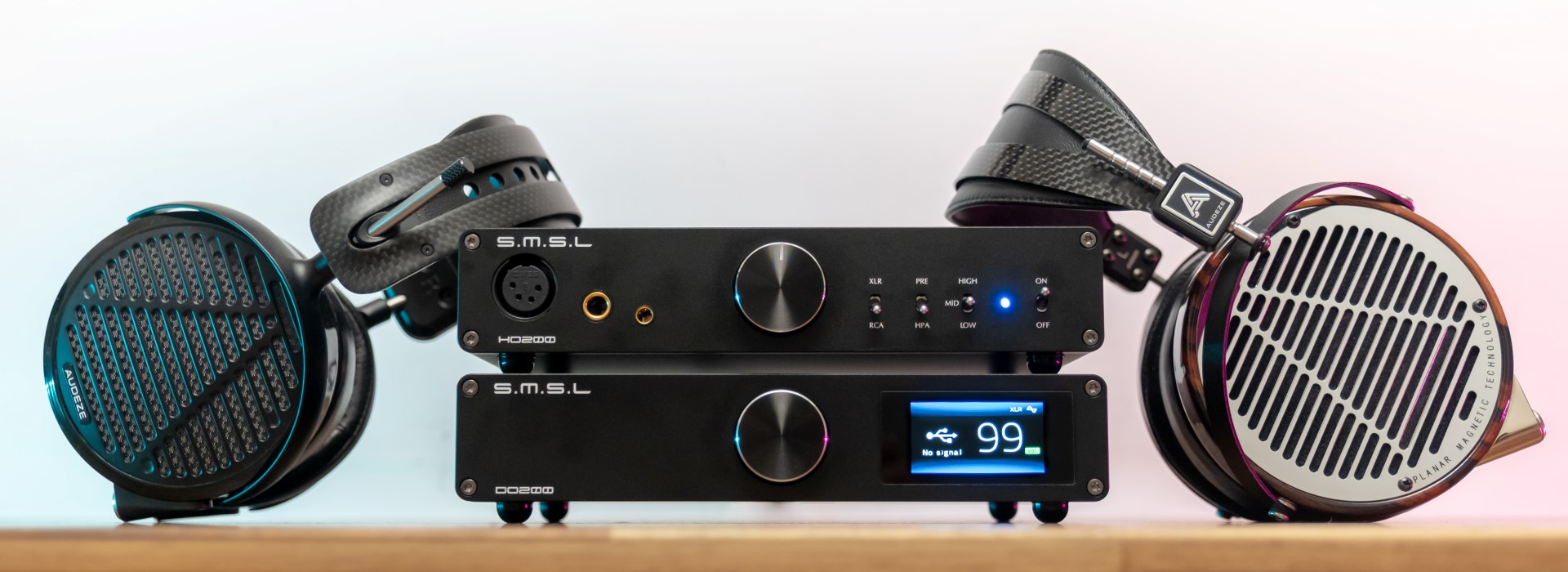
My Video Review:
When you’re thinking about affordable but good sounding Hi-Fi, you’re definitely thinking about brands from the far East, that forever changed the definition of entry level Hi-Fi. Companies like SMSL, Topping and Gustard are pumping new products at such a rate…that we don’t have the time for every unit out there. Obviously, SMSL already tried murky waters with VMV series…but in all fairness, they’re best known for affordable stuff that anybody could get and we covered plenty of that. Their S-9 series were unbeatable at their respective price points, but today we will be trying something that outwits, outperforms and outlooks everything that S-9 series supposed to be.
The newest DO200 and HO200 aren’t replacing anything, there’s definitely something new on the inside, but I’m getting a fresh new vibe on the outside. An affordable price tag was attached to both units, but after carefully listening to them for more than a month, I’m getting why the O200 series deserved to be released. DO200 uses the latest ESS Technologies silicon that offers a full MQA support, without the need of a special decoder. The best XMOS receiver is on-board that unlocked highest sample rates and DSD512 content and thanks to a brand-new Qualcomm Bluetooth chipset, it now supports some of the nicest codecs. It rocks a fully CNC-ed case, a colorful LCD screen; an advanced UI and finally there’s a volume wheel exactly in the middle. It’s a fully-featured and fully-balanced unit that wouldn’t inflict a critical hit with its $489 price tag.
Its complementary headphone amplifier and preamplifier is called HO200. Finally, SMSL ditched ultra-linear and achromatic THX-AAA modules in favor of their own Precise Linear Feedback Circuit (PLFC for short) modules that can pump up to 6-Watts of power and deliver a Signal-To-Noise ratio of 140dB! HO200 improves everything that SH-8S and SH-9 never were, spotting a true balanced topology and the lowest distortion ever recorded on a SMSL headphone amplifier. Noise floor went microscopic, distortion levels followed route and I’m curious if it will handle ultra-sensitive IEMs and flagship planar-magnetics alike. HO200 is their sleekest looking headphone amplifier yet that goes for as little as $399. As usual, I will be approaching them as a critic, but also as a music lover, commenting on everything I find useful to share with you. Before I move on to sound impressions, let’s unbox and check them out!
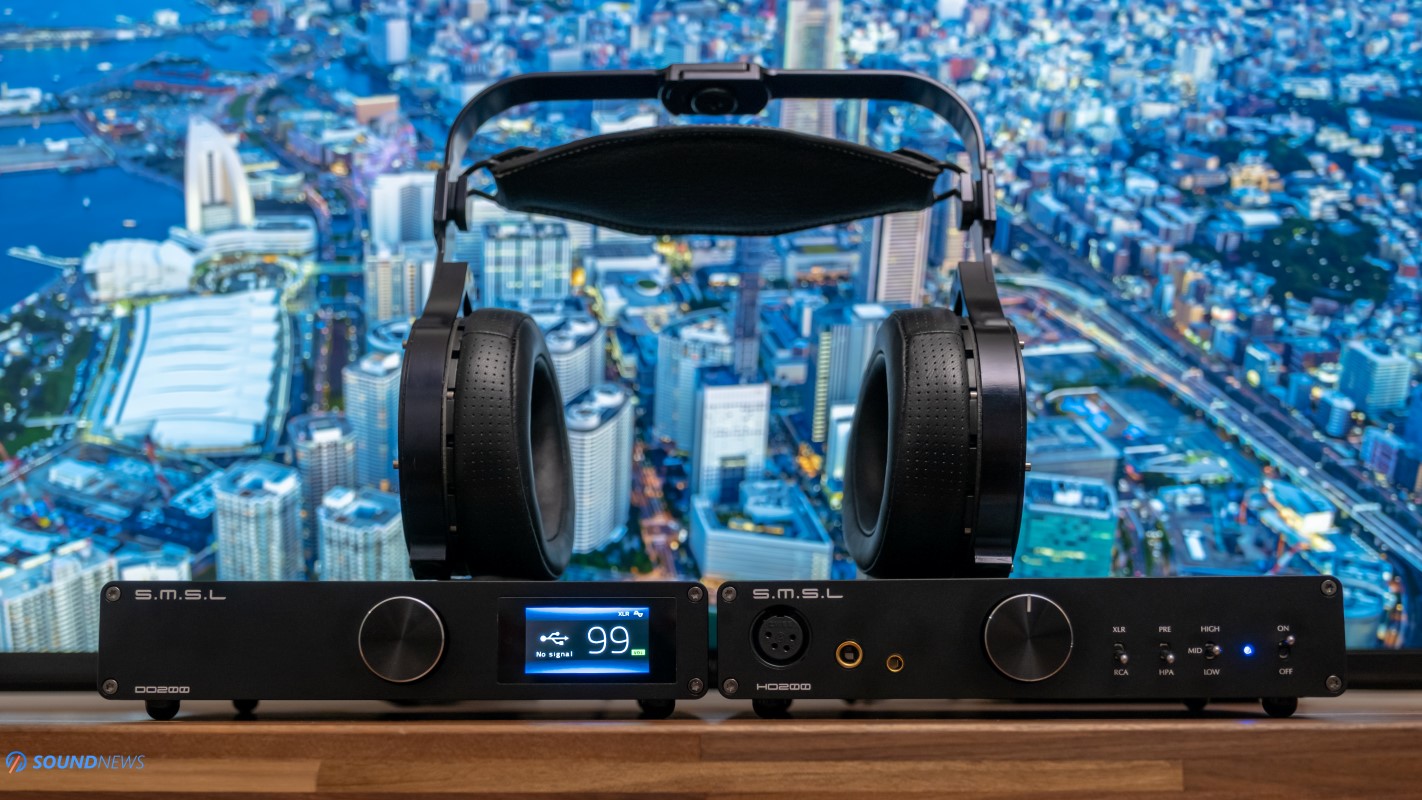
Unboxing Experience
SMSL went with bigger boxes – usually reserved for higher priced components and their weight already suggests that I’m dealing with moderately sized units. It’s a norm seeing them double boxed, filled with absurd amounts of foam for a better protection during shipping. SMSL used the same packaging from their SA400, SP400 and M400 units, going with “if it ain’t broke, don’t fix it” slogan. Both units are looking firm and solid, these are bigger compared to their S-8S and S-9 series, suggesting that we’re dealing with higher performance units. Besides metal brothers themselves, you’ll find power cords, user manuals and warranty cards. The D/A converter is also coming with a USB Type-B cable and with the newest RC-8C remote control, which is a necessity in a loudspeaker setup.
I strongly recommend checking out their user manuals first that will offer you more information than their dedicated web-pages.
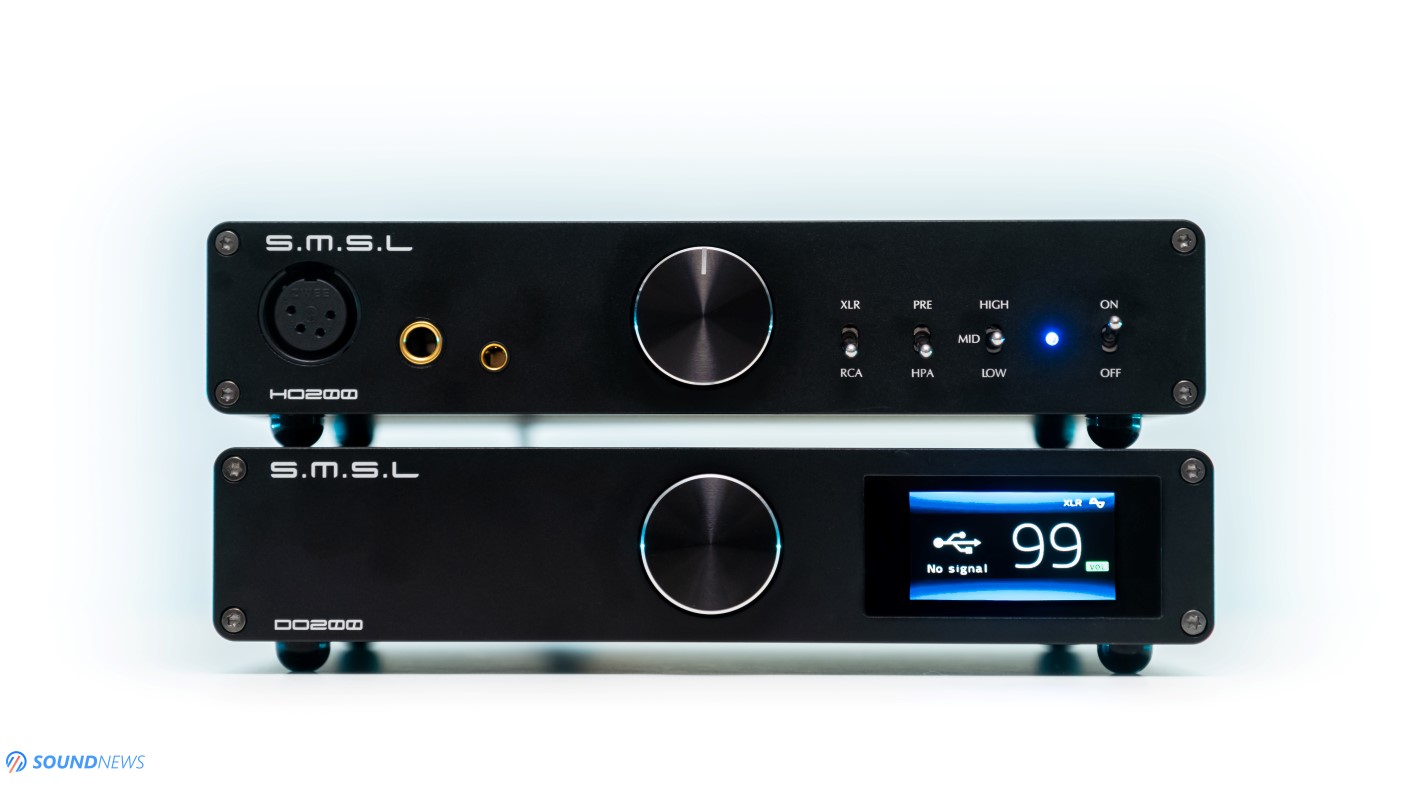
Design & Build Quality
If you explored some of my SMSL reviews by now, you know that I wasn’t (always) kind to their design team. They didn’t score highly with tiny displays on integrated amplifiers, angled cases on M200 and SP200 units, wagon-like cases on M500 series, misaligned buttons, screens and volume wheels. From far-East Hi-Fi makers, SMSL were the bravest ones coming with eccentric, cute or plain boring looking cases. Luckily, that’s no longer the case with their newest O200 series. We’ve got sleeker looking bodies, thicker aluminum plates, matte black paint, even pairs of tall rubber feet, mechanical switches and big volume knobs that are sitting exactly in the middle. In all seriousness, I do believe these are the simplest…or dare I say the nicest looking SMSL devices ever made. I wish SMSL would form a design language by now and stick with it for years to come; choosing functionality and simplicity above anything else.
You are looking at unibody cases, carved from aluminum ingots with two metal plates attached to their back and front. The front one is much thicker – a common practice in the Hi-Fi world that will eliminate wireless interference. Their bodies have rounded corners and smooth lines, so you won’t cut yourself or damage your precious equipment while handling them around. I always liked the idea of putting a volume knob or a display exactly in the middle, something that SMSL is doing for the first time.
Their rubber feet were placed in perfectly cut round spaces and those wouldn’t budge when dragging them over your table. All markings were laser engraved, except for the Hi-Res Audio sticker. Weighting around ~1.2 Kg (2.65 lbs) a piece and measuring 210 mm wide by 170 mm deep and 40 mm tall, both units are small and light enough to be used in tight spaces, as crowded office desks or in near-field stereo setups. Both units aren’t getting that hot (but are looking like that), so you can easily place the HO200 on top for a neat looking Hi-Fi rig.

Controls & I/O
HO200 reminds about old-school amplifiers thanks to its heavy-duty mechanical switches. With them you will be turning it On and Off, select its input, working mode and gain level. There’s a 4-pin XLR, 4.4mm balanced output, a regular 6.35mm headphone jack and a volume wheel in the middle. There’s a pair of XLR and RCA inputs and the same number of analog outputs, since it can work as a preamplifier too.
DO200 looks more futuristic with a volume knob in the middle (that can work as a menu navigator) and with a 1.9” colorful LCD display to its right. On its back you’ll find the golden digital quintet: USB, Optical, Coaxial, AES and I2S input. There’s a Bluetooth antenna socket and two analog outputs coming in RCA and XLR flavors. It can work as a DAC or as a DAC and Preamp combo, as its voltage output can be variable or fixed.
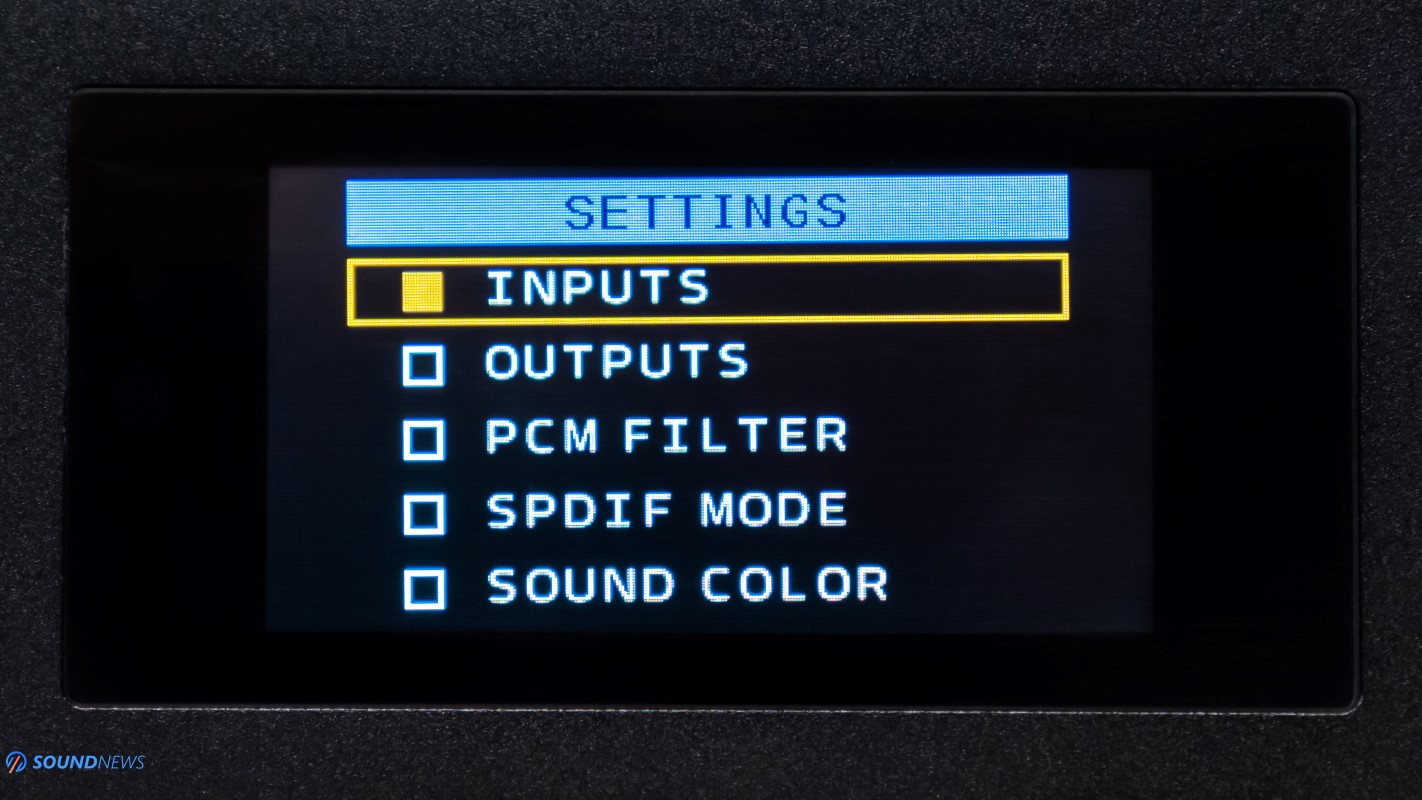
Menu Options on DO200
Its user menu can be accessed with its remote control or volume knob that doubles as a joystick. In the stand-by mode a single press will power it on and another press will enter its user menu where the following features can be accessed:
- Inputs – USB Audio, Optical, Coaxial, AES, I2S and Bluetooth
- Outputs – All Normal, XLR Normal, RCA Normal, All Inverted, XLR Inverted or RCA Inverted
- PCM Filter – you can select your desired digital filters that are built-in directly in the ESS Sabre DAC chip, there are 3 filters to play with as Fast Linear, Slow Minimum and Minimum Phase, but the sound difference is slight at best or none at worst.
- SPDIF Mode – Normal or Processor. In Processor mode the internal XMOS receiver can handle additional tasks, like receiving and decoding MQA and DoP signals via Optical and Coaxial.
- Sound Color – Standard, Rich 1,2,3, Tube 1,2,3 and Crystal 1,2,3. I like the standard one the most, but if you would like to alter its voicing, there are plenty of options to choose from. Rich and Tube are particularly interesting with brighter sounding headphones/speakers.
- PRE Mode – Volume Variable or Fixed. If you will be using it as a DAC only device, leave it at Fixed.
- FN Key For – Switch XLR/RCA, All Outputs, Bluetooth or Switch Phase – you are selecting the function of the FN button on the remote control
- DPLL (Bandwidth) – 15 positions, 5 is the default one. This setting is changing the jitter reduction algorithm, leave it in the default position.
- I2S Mode: Normal or Inverted
- IS2 DSD Channel: PCM DATA or PCM LRCK
- I2S DSD Flag: Pin15 or Pin14 (last three settings are concerning the I2S input, check user manual for additional details)
- Dimmer – OFF or 5 to 60 seconds – self explanatory
- Brightness – 6 positions, lowest one is almost dimming it completely
- Reset – back to factory settings
In the end we’re getting a feature-packed user interface, that’s more advanced to the one found on SU-8S or SU-9N.
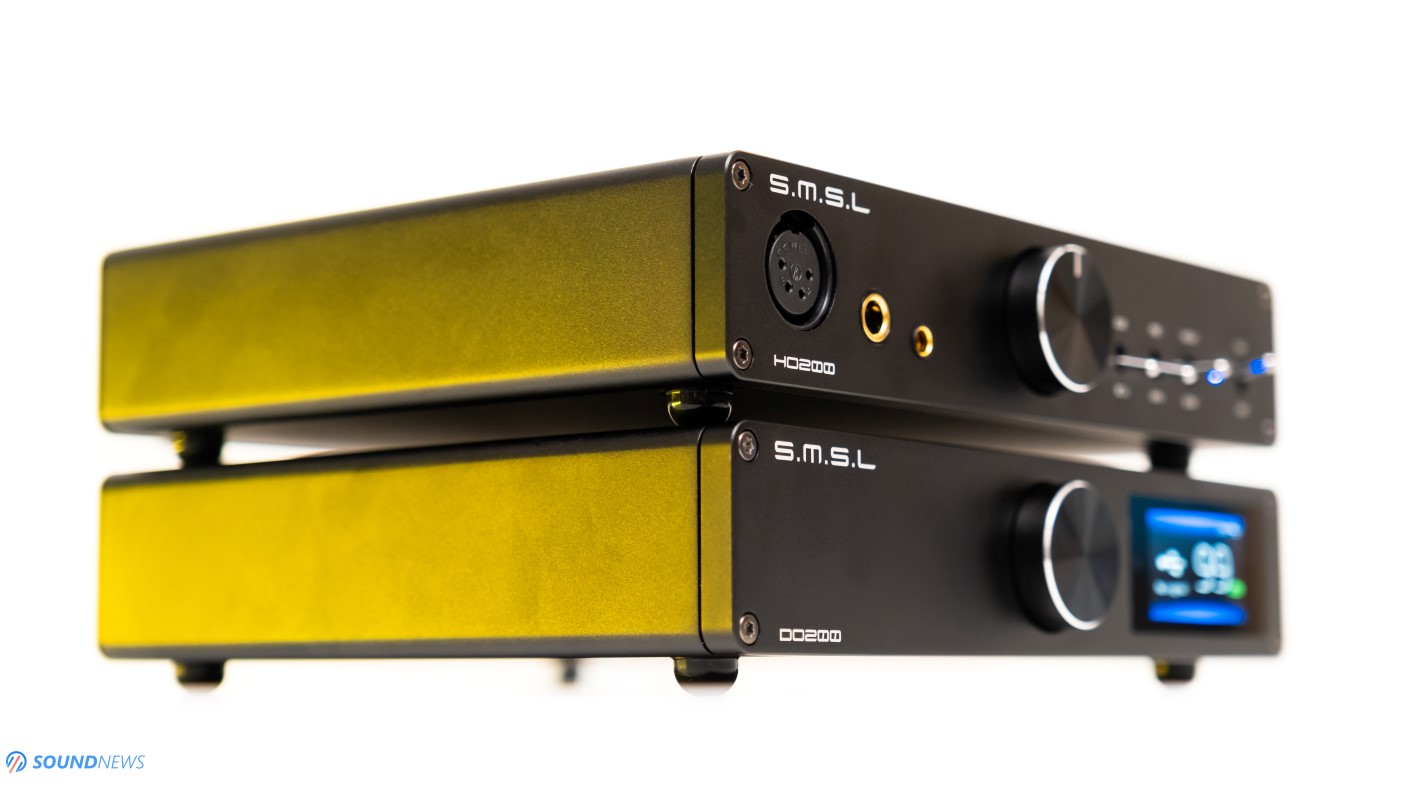
Tech Inside them
I’ll start with the DO200, as digital audio is more interesting to me. SMSL went with two ES9068AS DAC chips of ESS Technologies that incorporates a full blown MQA decoder in the same silicon. Additional electronics were no longer needed to fully unfold and decode MQA content, shortening the signal path as much as possible, instantly locking on such files.
ES9068 is a current output DAC chip, meaning that a current to voltage conversion (I/V) stage needs to be built around it. Thankfully, SMSL went with warmer and more natural sounding OPA1612 op-amps, that are better suited for these particular chips. OPA1612 are dual op-amps and since there are five of them, it seems that SMSL used all four channels of ES9068, working in a true balanced configuration. There’s a DAC chip per channel for a lower channel crosstalk and for a (slightly) higher dynamic range compared to their SU-8S and SU-9N units. SMSL went with the nicest XMOS receiver that you can spot in some of the best delta-sigma DACs of today. XU-216 (2000 Mips) is in place and it’s the recommended receiver for MQA, Hi-Res PCM and DSD playback.
SMSL used a much nicer Bluetooth receiver compared to the one found on SU-8S, it supports nicer codecs as AptX-HD, AptX-Adaptive and LDAC. Bluetooth version 5.0 is on board and thanks to an external antenna, the audio signal should be strong and steady even with a few concrete walls in between the sender and the receiver.
SMSL used an encapsulated 12 Watt switching mode power supply (SMPS). I’ve seen the same one in plenty of their devices (SP200, M200, SU-9, SU-9N, SH-9, SU-8S, SH-8S) where it was noiseless even with the most sensitive loads.
Moving on to HO200, SMSL finally moved away from THX Achromatic Audio Amplifier modules that were powering their extremely popular SP200, SH-9 and SP400 headphone amplifiers. Finally, not as a bad thing, as I enjoyed those amps with a lot of headphones, but finally as they can unleash their imagination and prove that THX-AAA is not the final frontier. SMSL developed their own modules that were called Precise Linear Feedback Circuit (PLFC for short) that is a direct response to the Nested Feedback Composite Amplifier (NFCA for short) modules of Topping and to the THX-AAA modules developed in the USA. SMSL isn’t specifying exactly what op-amps were being used in their modules, but I’m spotting OPA1612 as voltage amplifiers (input stage) and OPA564 as current buffers (output stage) that can output up to 1500mA each. There are several discrete components in place and the same 12-Watt switching mode power supply, several voltage regulators and a higher capacitance to the DO200 can also be spotted.
HO200 outputs some serious power, more exactly 6 Watts in 16 Ohms and half of that in 32 Ohms. With numbers like these, the little-big amp should drive even the most demanding loads as high-impedance dynamics or current-driven planars without breaking a sweat. Of course, I will be testing both claims, so stay tuned for that. A big surprise was spotting a -4dB gain on its low-gain position that should work exemplary with high-sensitivity IEMs. Please make sure you lower your volume before jumping to its high-gain setting as there’s jump of 23dB. That’ s pretty much it, I’m longing for some music, so let’s hit some eardrums!
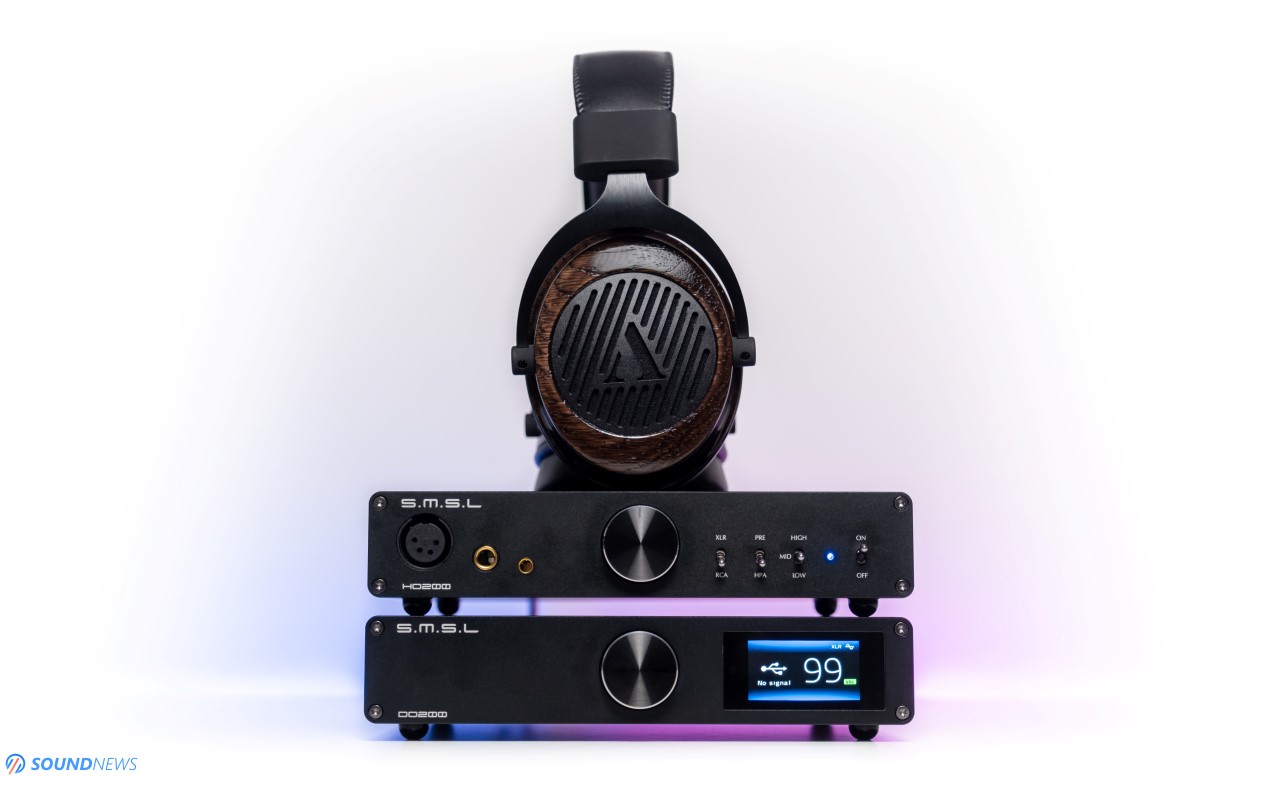
Sound Performance
I. Preliminary Sound Impressions
If you followed some my SMSL DAC & headphone amplifier combo reviews, then you’d know that their SU-6 & SH-6 and SU-8S & SH-8S stacks didn’t impress me as much, due to a serious, almost robotic performance, focusing on technicalities, but less on the act of music listening. I couldn’t fault their performance a single bit, but their tonality wasn’t making music the way I wanted, never begging adding more tunes into my playlist.
I’m not sure if a better channel crosstalk or a higher number of discrete components are playing tricks with me, but I’m definitely getting a more spacious and a more enjoyable experience even with ultra-linear headphones as Sennheiser HD800S, Hifiman Susvara and Abyss AB-1266 Phi. Wait a sec…Susvara you say? When Suzy hoped on my head, it seems that a higher bias of 23dB compared to ~17dB on their former headphone amps gave a big helping hand when dealing with such behemoths of the headphone world. I’ve complained (in my SMSL SP400 review), that power is nothing without gain, but HO200 feels and performs better on high-gain even compared to pricier amplifiers like SP400. Susvara wasn’t driven to their maximum potential…and that’s understandable given their sensitivity, but I never felt that dynamics were dragged into the abyss, never to be seen again. Susvara worked good to almost great, driving them above my expectations, as I rarely went over its 2 O’clock position. Bass notes weren’t lacking oomph or punch, dynamics weren’t coming in limited quantities and it really awoke some my headphones, especially planar-magnetics that needed a little bit more current to hit the dance floor.
DO200 felt not only cleaner and more transparent to their SU-8S and SU-9N units, but also wider and deeper sounding on all axes. Instead of a senseless, boring, but ultra-clean sound, DO200 was adding more soul into my music, even a little bit more compared to pricier converters as Topping’s D90SE, but less compared to the SMSL VMV D1SE and D2. More important than ever is that SMSL’s stack was making music livelier and more engaging, something that I couldn’t say about former SMSL stacks that passed through my hands. If everything felt right from the get go with a pair of Sennheiser HD800S, then warmer sounding planar-magnetics shined even brighter on this combo.
DO200 was pushing forward huge quantities of micro-details, spreading them around, while HO200 was pushing higher dynamics, trying to control my cans with an iron grip. The biggest surprise was HO200’s power reserve, as besides Hifiman Susvara, there wasn’t a headphone that demanded high-gain for outstanding dynamics. Even Audeze’s LCD-5 and LCD-4 sounded snappy and alive on mid-gain, leaving a ton of headroom for higher dynamic range tracks as Hi-Res Blues and Classical.
This time around, SMSL didn’t want to impress with a clinical presentation like they did with the S-8S line, putting a little more meat on the bone, sweetening the midrange performance and completely removing unnecessary ringing from the top-octave for a smoother presentation. There wasn’t a single headphone from my stable that craved for more bass authority, sometimes I longed for a more spacious sound, but for that you’ll need deeper pockets, bigger and heavier units altogether.
Audeze LCD-4 is my second hardest to drive planar and yet at around 10 O’clock (roughly a 1/3 on the volume wheel) my ear lobes started flapping like butterfly wings when latest Symbolico’s masterpiece (Qobuz / Tidal) started playing. SMSL unleashed a furious wombo-combo for warm and thick sounding headphones like Audeze LCD-4, Kennerton Rognir/Wodan, Meze Elite/Empyrean, balancing out their tonality, improving their speed and cleaning out the mess. In the end, the key words with this setup are: high levels of transparency, a noiseless background, a fast speed and decay, impressive dynamics and enough power output even for the most demanding loads.

II. Noise Floor (HO200)
Alright folks, this will be a much-shorter chapter as I’m getting a strong feeling that I’ve listened to this particular stack over and over again. Oh, wait! That’s because it performs similarly to mid-level amplifiers that are using noise shaping techniques – as nested feedback or negative feedback like NFCA or PLFC amplifiers of Topping and SMSL. These units are killing the noise by default, without any interventions from my part. SMSL measured HO200’s noise floor at 1.0 micro-Volt on high gain, but since their audio analyzer is adding a little bit of noise on its own, HO200’s noise floor is below those numbers by a tiny bit. Simply put…this is instrument-grade, world-class performance and I’m putting it in the same boat with units like SMSL SP400, Topping A90, Singxer SA-1 and Benchmark HPA4. SMSL are using switching mode power supplies in their mid-level devices and while I’m not a huge fan of such implementations, with proper engineering skills, filtering and regulation stages, everything is possible.
Be it low or mid-gain, medium or maximum volume, I couldn’t spot that the amplifier was even powered on! Dynamic driver IEMs, hybrid or full-armature IEMs weren’t showing an increase of the noise floor at any volume levels, transforming this stack into an IEM friendly one. Even via 4.4mmm balanced output I couldn’t sniff traces of noise, which is an exemplary performance in my book. Due to its (higher) power output, I would use low-gain for a longer travel on the volume wheel, otherwise mid-gain was exactly as clean and noiseless. Naturally, high gain was adding some fog and a bit of hum, but I wasn’t brave enough pressing play at those levels and I suggest never touching high-gain with sensitive loads as IEMs, portable over-ears or sensitive desktop loads as Focal headphones.
In the end, I’ve got a pitch-black background and a noiseless performance with all my IEMs, regardless of their sensitivity. Gremlins weren’t dancing around; nasty noises were banished for good and there isn’t much to add in here. With a near zero output impedance and inaudible noise floor, you will be surely testing the limits of your IEMs. There’s only a small nitpick with HO200: at the lowest volume position, some music is leaking and you can still hear it, not a biggie, but it needs to be mentioned.
Moving on to the DO200 DAC, SMSL further optimized its noise rejection technique, so you can forget about noise crawling through its DC or digital inputs. Their entry-level SU-6 wasn’t great with USB ports of my PC, as IEMs picked up residual noises immediately, but DO200 doesn’t have such issues anymore. Putting it in my loudspeaker setup, working as a DAC and Preamp, followed by two Benchmark AHB2 power amplifiers didn’t add greyness or hiss into the mix. KEF’s UNI-Q drivers were dead silent even after approaching them closely. Adding a cell phone on top didn’t add hiss and all I’ve heard was a clean, undistorted sound that didn’t stay in front of the musical signal.
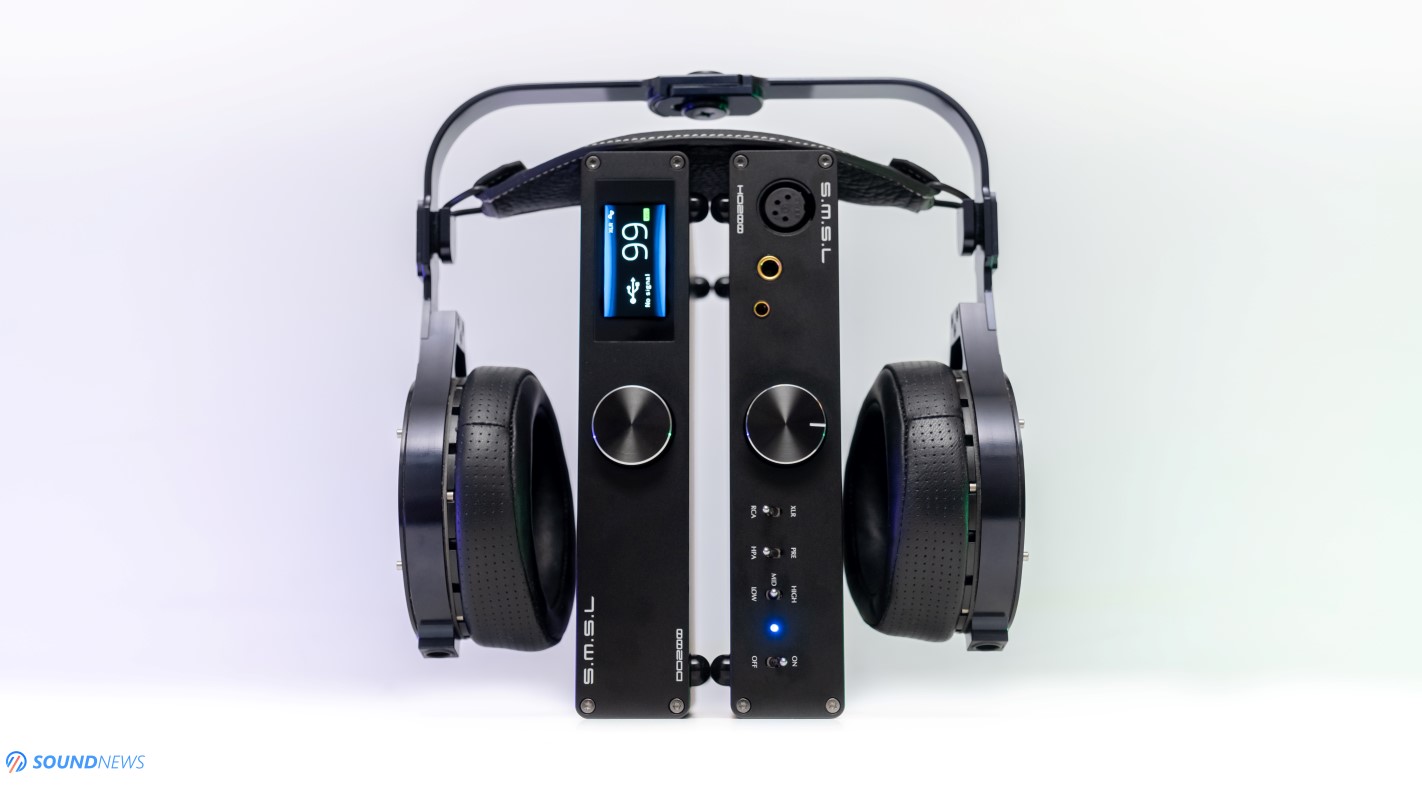
III. Resolution & Transparency
Hifiman Susvara and Audeze LCD-5 aren’t used for my listening pleasure only, as often times they will be checking out resolution capabilities of such units. Feed them dirty power and they will be responding immediately, lowering the amount of resolution that comes forward, blurring the overall picture and hiding a few notes behind a veil. I’m using these headphones when evaluating dynamic range of all sorts of amplifiers and they never let me down. This is (another) easy-peasy chapter to write about, as SMSL cleverly used a few tricks in the analog domain, drowning the noise floor as much as possible, a similar thing that Topping did with their NFCA modules and Benchmark Media did with THX-AAA ones. Even without any burn-in, there’s an impressive amount of information coming forward and both units shined equally well in this department. The biggest surprise wasn’t the HO200 with its detail-oriented nature, the biggest surprise was the DO200 DAC that was clearer sounding to their SU-8S and SU-9N units. Both units exhibited strong contours and defined leading edges, always trying to steal my attention with their sharpness. On the plus side, I never found them clinical, harsh or plain boring sounding. Both units are filled with OPA op-amps and there are even discrete components all around, infusing the right amount of smoothness and naturalness. While I won’t call them soul-grabbing or meaty sounding, they did remind about such units and that’s a good thing, especially for an op-amp based DAC and amp combo.
I’m not getting a dead-neutral presentation like it was the case with SU-8S & SH-8S or with higher priced SU-9N & SH-9 combo, as SMSL added more flow in here, rounding the top-end for a more enjoyable listen long term. You can clearly differentiate this combo from lower-grade ones, as besides being technical and precise, there’s a little more when it comes to flow and openness.
A few years ago, a performance like this would cost you an arm and a leg, but things changed impressively fast and I can’t imagine what’s going to happen in the following years. I guess it’s about time Audio Precision closes their doors and starts working on better audio analyzers, as affordable units like DO200 & HO200 are already challenging the best measurement equipment out there. In my view, DO200 DAC sounded impressively clean, but never going overboard with its sharpness. It had a good linearity, meaning that it wasn’t clinical or plain boring in long listening sessions. I could easily focus on the smallest nuances with headphones like Sennheiser HD800S and that felt like a child’s play with it.
Total by Seigmen (Tidal only, as it isn’t on Qobuz) is an album that I greatly enjoy on evenings with a glass of ale near me. It’s a beautiful album, wrapped in darkness and doomy, almost gothic atmosphere that is recorded pretty well for such a musical genre. While fuller and denser sounding to the usual alternative metal, musical notes weren’t interplaying with each other as much, there was more air and plenty of space in between the notes. I see it as a brave, atmospheric experiment that was touched by the north with its cold and dark vibe. To my surprise, tracks like In Limbo and Döderlein felt clean and groovy at the same time, combining slow-paced rhythms with ambient vocals, while pushing huge quantities of micro-details as if the Loudness War didn’t touch this band at all.
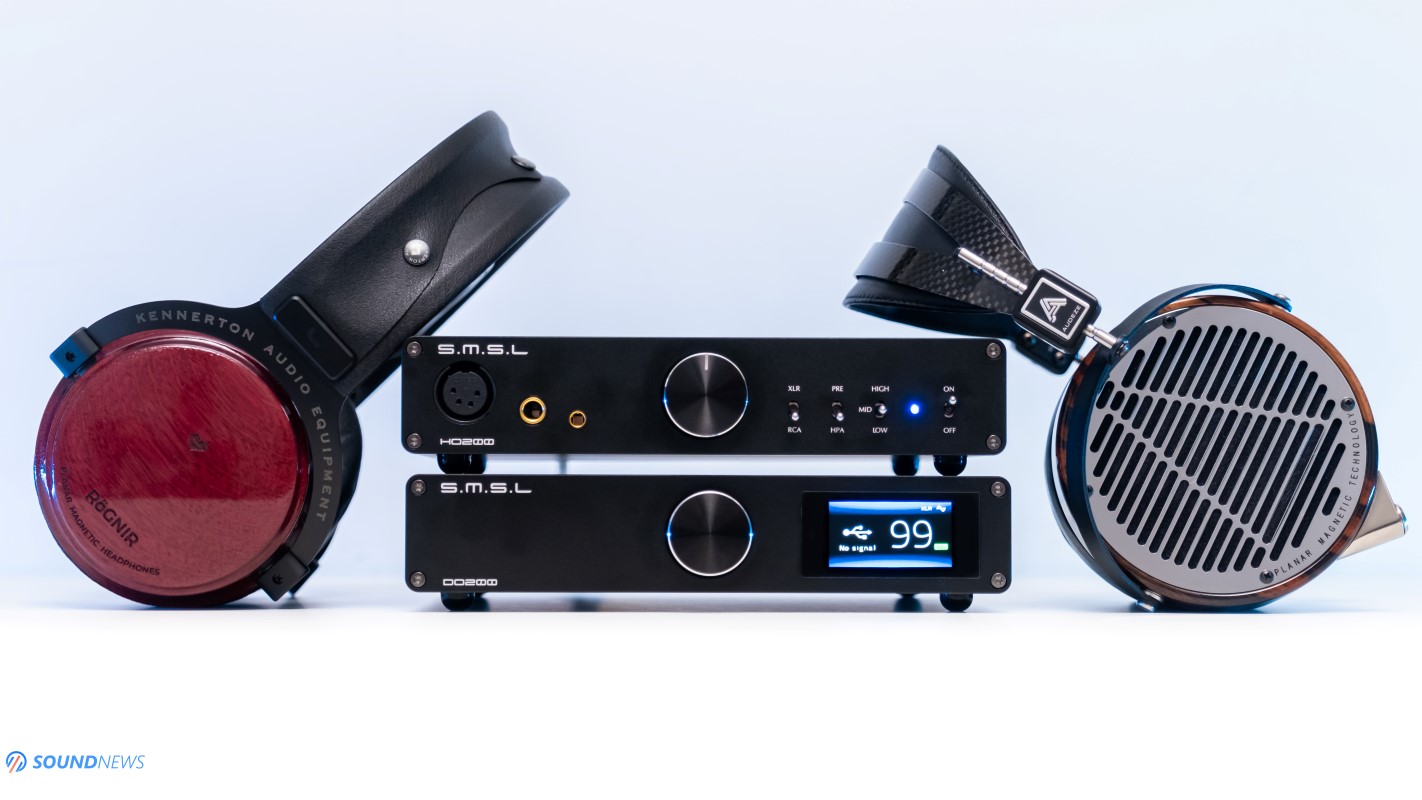
IV. Power Output (HO200)
When it comes to raw numbers, we are looking at the same good-old 6 Watts in 16 Ohms and 3 Watts in 32 Ohms that can also be found on their SP200, SH-8S and SH-9 amplifiers. However, due to a higher gain factor or 23 dB versus ~17 dB on previously mentioned amplifiers, HO200 feels more powerful, with more headroom always remaining on tap. My former $3000 Benchmark HPA4 offered the same amount of power, making the HO200 an absolute steal, factoring its Watt-per-Dollar performance.
With most of my headphones, I felt like it was over 9000 power wise. Starting with sensitive dynamic headphones and finishing with difficult planar-magnetics, it didn’t have a slightest problem driving them all, even on mid-gain position, including the Audeze LCD-5, LCD-4, Erzetich Phobos V2021, Kennerton Rognir (planar) and Sennheiser HD800S. Rarely I was touching its 12 O’clock position (half its power), as there was always a substantial headroom remaining on tap for crazier dynamic swings. Dynamics were going up and down in microseconds, everything felt tightly controlled, while sounding fast and nimble at all times. Unsurprisingly, it offered high-quality bass levels, a warmer midrange to the usual NFCA and THX amplifiers, while gently slashing huge portions of brightness from the top octave. Even bright sounding headphones worked better on this combo to previously mentioned combos (S-8 and S-9 series), slashing a substantial amount of glare to their former amplifiers.
With Hifiman Susvara and Abyss AB-1266 Phi, as I was already preparing myself for a boring and lifeless performance, but there was definitely more life in them, especially the low-end felt more playful to me. SP200, SH-8S and SH-9 were barely okay with such loads, but HO200 felt better at controlling their drivers, especially when pushing bass notes on crowded tracks. While there are several protection circuits in place on HO200 as overload, overvoltage and DC protection, HO200 never shut down with the Susvara and AB-1266, which came as a surprise. I don’t recommend the HO200 as the only headphone amplifier for such loads, but for a budget-oriented setup, it would work fairly well, delivering a decent performance, never botching their transparency and detail-oriented nature.
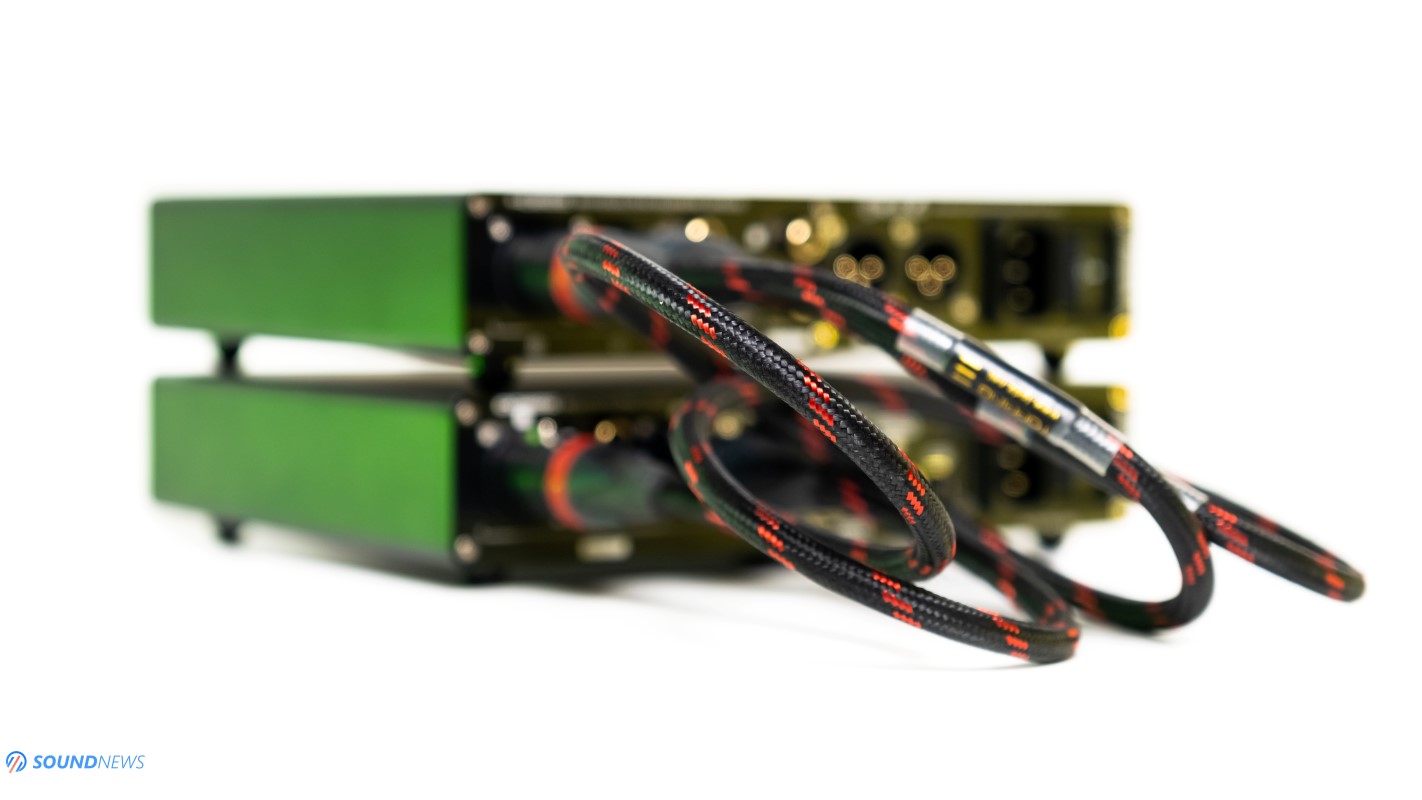
V. Transient Response
Generally speaking, ESS-Sabre DACs and newest SMSL amplifiers are regarded as fast sounding, providing shorter decays versus transistor or tube-based amplifiers and that was certainly the case in here. Both units will easily keep up with modern music as pop, rock, electronica and metal. With a stack like this I’ve got defined and textured double drums, a physical manifestation of the bass, always sending tremors with bass-intensive music. Leading edges were a little sharper to traditional Class-A amplifiers, but there was some liquidity, like I was listening to good mastered DSD material at all times. HO200’s close to zero output impedance preserved its damping factor and its wide-bandwidth design never limited the power output and you can be sure that nothing would be stopping this wild mustang. Decay of the notes were lightning quick and sometimes I longed for a longer vibration, especially with string-based instruments, as everything happened in split seconds with sounds going in and out instantaneously.
Compared to their past headphone amplifiers (except for SP400), HO200’s higher gain factor did some wonders with modern music played back on planar headphones. Audeze LCD-4 were particularly punchy and hard slamming in the bass, pressing the gas pedal to the floor with modern tunes. HO200 pounded a little harder in here, reminding a little about mid-class Class-A amplifiers like Singxer SA-1 and Burson Soloist 3X. it’s not going berserk with electronica tunes, as Class-A amps are doing by default, but it approached closely and delivered a similar performance. Bass notes had a higher authority down low, I felt them powerful and bolder in their presentation. In my opinion this is their second-best headphone amplifier to date, being outperformed only by the SP400. All in all, we are getting a 10 out of 10 speed and an 8.5 out of 10 bass slam and impact. Considering all of the above, we got a snappy sounding rig that wouldn’t limit dynamics and that’s all you need to know about them.
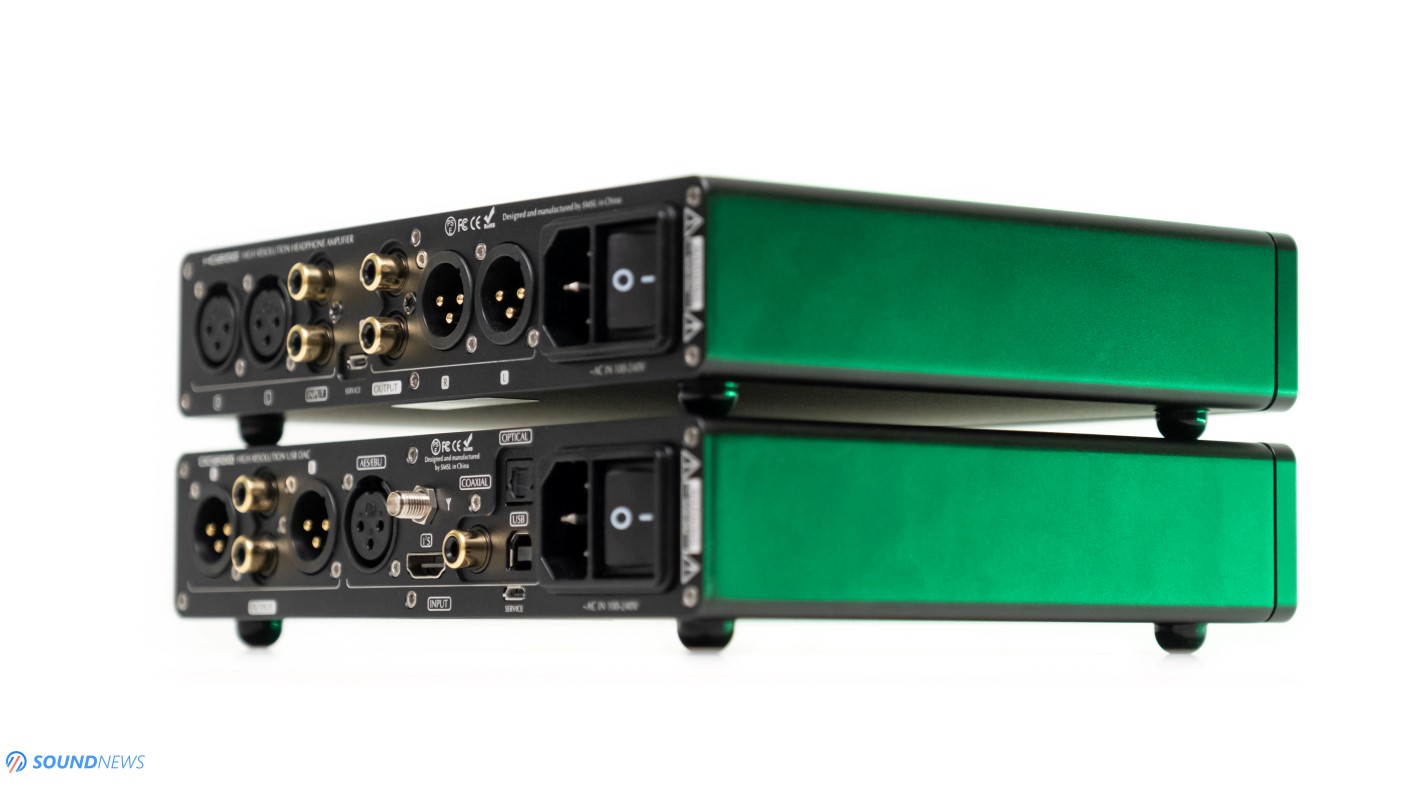
VI. Soundstage & Depth
HO200 was doing most of the heavy lifting on previous chapters, but it’s the other way around when it comes to layering, depth and soundstage size. I wanted to be 100% sure of what I was hearing, so I’ve used the DO200 in a secondary headphone setup, connected to a (much) higher-tiered amplifier (Trafomatic Primavera) and the same happened with HO200, connecting it to an end-game R-2R unit (Denafrips Terminator Plus). I came to a conclusion that DO200 is on the third place versus all SMSL DACs that passed through my hands, outplayed only by higher tiered VMV D2 and D1SE units, while HO200 was the second-best amplifier, outperformed only by their SP400.
SMSL crafted the DO200 as a dual-mono, fully differential and fully balanced DAC, trying to drown the channel crosstalk as much as possible, by the use of two ES9068 chips in current-mode operation. Without boring you down with technical stuff, I will just mention that such silicon reached its peak or close to it when it comes to an open and wide soundstage, depth and layering. ESS-Sabre based converters aren’t known to be pushing the boundaries and delivering and out of head experience via headphones, but such limitations could be overwritten and bypassed with clever engineering. While there isn’t an overkill power supply, filtering and regulation stages in place, DO200 was still bigger and more spacious sounding to usual DACs coming from far-East below one grand.
The perception of a breathable sound compared to my own setup wasn’t that big, due to the nature of headphone listening itself, but still…the whole experience felt quite holographic, never locking musical notes inside my head, I felt at peace and relaxed, as it pushed that energy around me. Even tiny IEMs started sounded decompressed compared to portable DAPs, even with tiny drivers sitting centimeters away from my eardrums.
The lack of a dedicated line-amplifier circuit was felt almost immediately, when I’ve replaced the Gold Note DS-10 Plus with the DO200, driving two Benchmark AHB2 mono blocks and a pair of KEF Reference 3. DO200 wasn’t as effortless, as soothing and spacious sounding anymore, but it’s understandable considering it’s 1/10 of DS-10 Plus price. Adding the HO200 in between DO200 and AHB2, working as a dedicated preamplifier, improved the low-end delivery, driver control and transient response to a certain degree and I see myself using a stack like this in a near-field setup with powered monitors in front of a PC.
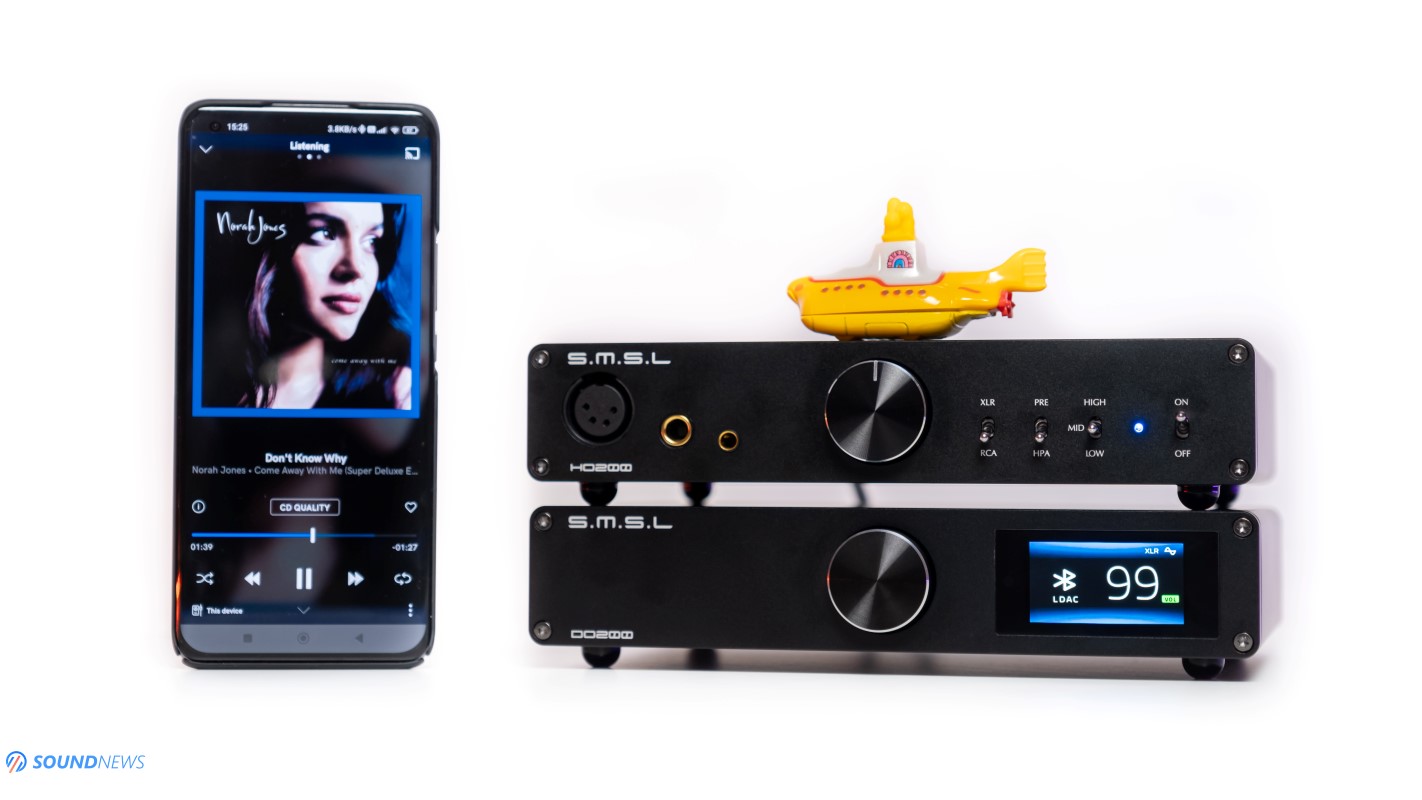
VII. Bluetooth Performance
Aaah, the good-old Qualcomm QCC5125, Bluetooth 5.0 and an antenna that works as a signal booster. It’s almost a signature move for all DACs coming out of China, as most of them, if not all of them are coming with this exact configuration. QCC5125 is part of a newer generation Bluetooth receivers that besides LDAC and AptX-HD, can also receive the newest AptX Adaptive codec. This is not their flagship receiver, but it’s among premium ones, specially tailored for high-quality audio playback.
You’ll need to enable the BT input on the DAC, search for SMSL DO200 with your smart device, connect to it and voila! You’re ready to rock! When it comes to Bluetooth coverage, after putting it in the middle of our HQ, no matter how far I went with my smartphone in a four-room apartment, I couldn’t lose that BT connection. It was going strong even with 2 concrete walls in between us, never skipping a beat. Only when I was at the balcony (some ~15 meters away), my speakers started losing beats, adding pops and crackles in between. In an open space, it performed admirable and even past 20 meters, the signal was still going strong.
Sending music from my smartphone that was playing tunes from streaming services as Qobuz and Tidal worked as a charm and LDAC codec sounded above decent, losing some definition, leading edge and resolution compared to a wired connection. You can easily use the DO200 as a Bluetooth receiver in your daily routine, but you should never consider its Bluetooth input as an alternative to any wired digital input that will be offering a higher resolution, a faster presentation and a better frequency response at both ends (sub-bass and upper-treble).
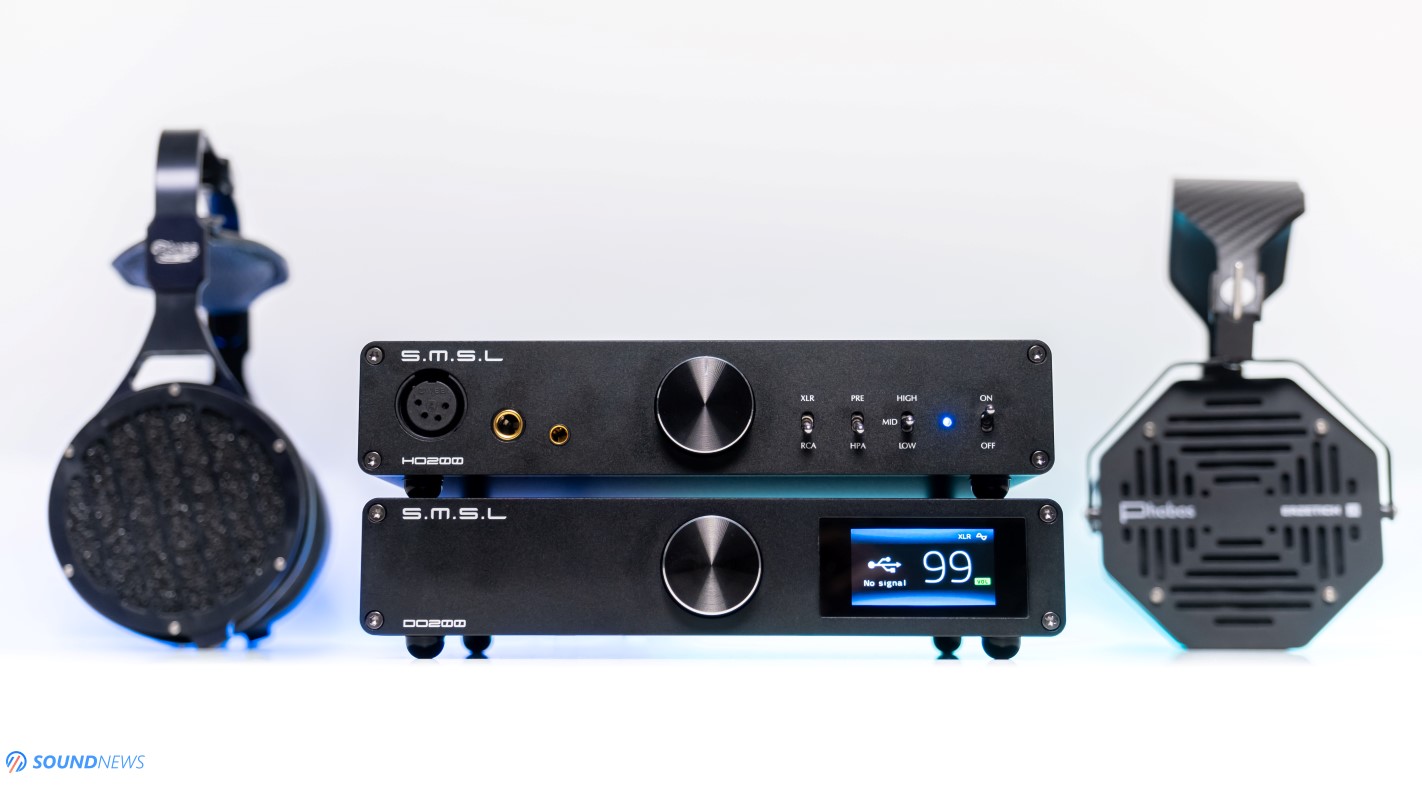
VIII. Frequency Response
When it comes to frequency response, both units are humming a familiar tune, going into the same direction, choosing a fairly neutral frequency response, without limiting both ends of the spectrum. Both are extended from the lowest octaves to the highest treble peaks, without adding an over-sharpness filter.
A. Bass
SMSL always liked a gentle kick in the bass, especially their higher-end DACs were putting a mild accent in there and O200 stack follows the same course of action. Expect a higher presence in the sub-bass, a bit more texture and weight in there too. PLFC modules of HO200 are putting a higher accent on bass quality, rather than on quantity and that’s why this particular combo worked as Ying and Yang, complementing each other’s faults. I was mostly with LCD-4 and Abyss AB-1266 on my head for these reasons alone, as I couldn’t get enough of that juicy bass, quality and quantity wise. Even simplest blues and jazz tunes felt boosted, adding a substantial kick down-low, as if musicians forget their notes and started playing modern funk instead. If you’re hunting for layers, clean and distortion-free bass notes, then you’re surely reading the right article. There isn’t a secondary stack from the house of SMSL Audio that delivered the same engagement factor and I consider them as a clear upgrade from the S-6, S-8 or S-9 series in every way.
B. Midrange
SMSL counterbalanced that sharp sounding ESS silicon by adding organic matter and liquidity with the help of bipolar op-amps of Texas Instruments. As I am typing this, DO200 isn’t a replacement to any of their units and I’m happy that such unit exists today, coming closer to their VMV D1SE and D2 tonality wise. SMSL traded some linearity with warmth and tonal density, as everything happening in this region felt energetic and alive, like there’s a higher dynamic range in my music that I know for a lifetime. They planted seeds of naturalness and smoothness, but not too many of them, reminding a little about higher tiered oversampling DACs. DO200 is actually one of the nicest affordable Sabre DACs, putting more meat on the bone and grabbing my attention with a higher midrange presence. HO200 on the other hand isn’t playing around too much, leaving it as neutral as possible, without becoming boring sounding in the long run. DO200 pulls the HO200 behind and improves its midrange delivery, making this stack just a little bit more special to all their past doings.
C. Treble
Treble is the only region where both units are humming the same song, delivering clear and extended trebles, well-defined textures and sharper leading edges to my usual setup (R-2R DAC + Hybrid amp). I’m not getting aggressive trebles that S-8S series were notorious for, I’m no longer getting that raw and unpolished treble performance, as some refinement made way into the newest stack. I went all-in with my usual playlist filled with rock, metal and electronica and I could listen to that all day long even with a pair of HD800S on my head, which is highly unusual for such silicon and amp modules. I’ve got an accurate rendition of bells, cymbals and tambourines, their metallic bodies were defined and impactful sounding, but I never found them fatiguing long term. Please don’t expect the smoothness and worry-free top octave of R-2R and FPGA DACs and of Class-A transistor, hybrid or full-tube amplifiers, as there’re only traces of that in here. If you don’t like your trebles crisp and detailed, then you might look elsewhere, as both units are shooting for a brutally honest presentation.
All in all, the SMSL stack covered my hearing range in full, extending from the bottom-end to the highest treble peaks, adding a higher substance in the bass and midrange and never touching anything else.
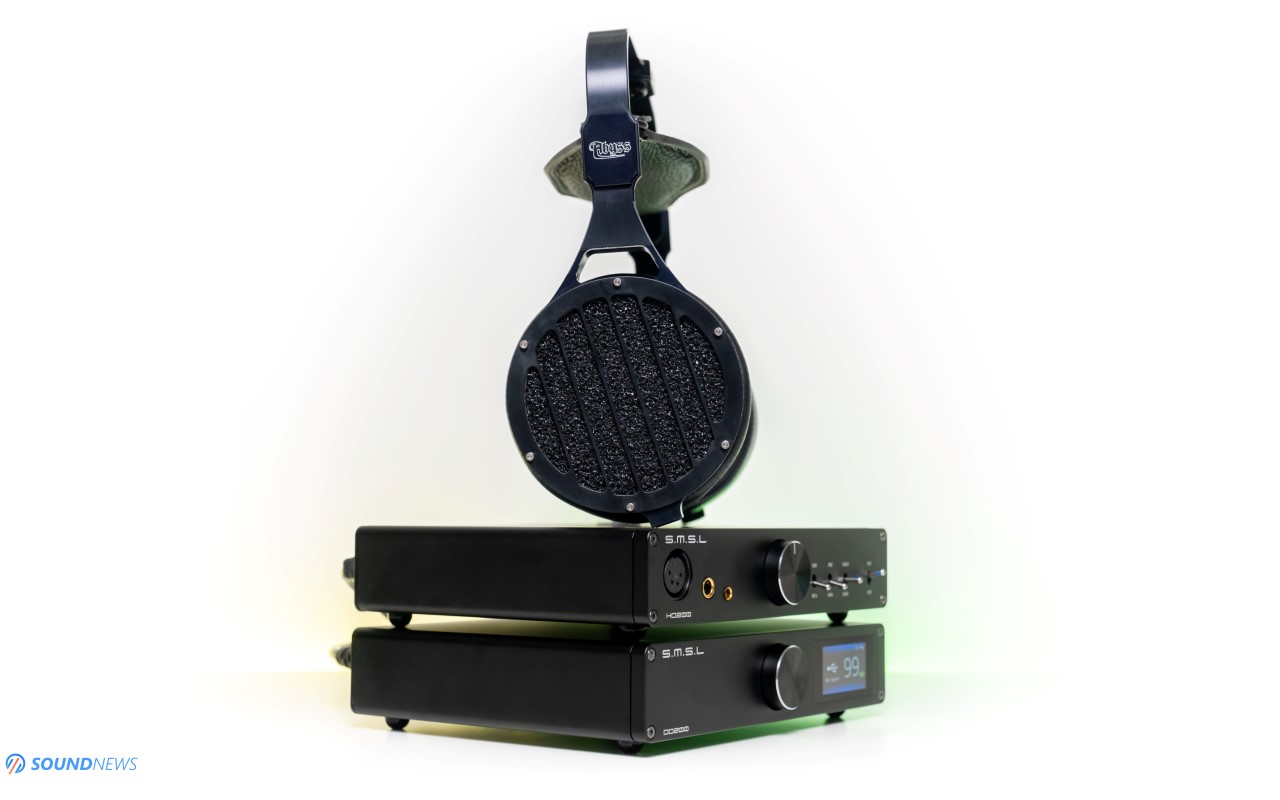
Conclusion
I’m not sure if SMSL engineers are playing at the casino that often or maybe its pure coincidence, but both units would cost you exactly $888 together. For this amount you’ll be getting a linear headphone amplifier that worked equally well with ultra-sensitive IEMs and hard to drive planar magnetics, that never raised noise to alarming levels, driving nicely the notorious Hifiman Susvara without breaking a sweat. It was pumping a higher engagement factor to their previous amps, adding top-class resolution and dynamics, while tightly controlling the diaphragms of my cans. It outclassed all their past doings with the exception of SP400, which makes HO200 an easy recommendation below $500.
With DO200 you are getting a fully balanced unit that carries all possible digital inputs and features a serious DAC should possess. There are sound color options, PCM filters, variable or a fixed voltage output, MQA and Bluetooth capabilities, an LCD screen, a remote control and additional features that makes it a bargain in today’s Hi-Fi landscape. I was a big fan of their VMV D2 DAC and SP400 headamp and today’s combo reminds a lot about them. Their smaller and more affordable stacks were quite decent sounding, putting a show versus pricier components, but today’s combo shoots for a higher place in my rankings. If their top-of-the-line units are out of your reach, then today’s combo delivers a similar tonality and feature set at a fraction of their price.

Both units deserved our Silver Award and I can’t wait to see what’s coming next from the house of SMSL. How about fully discrete, Class-A headphone amplifiers and fully discrete DAC output stages? Can you up your game SMSL? I surely hope so. DO200 DAC will set you off $489 and its complementary HO200 headphone amplifier $399. They were kindly provided by Aoshida Audio and you can get them from their web-store by following these (1) links (2) (free world-wide shipping and full warranty support are included in the price). If you are getting any of these, please come back and leave a comment below. Until next time, folks!
PROS:
- Simplest looking SMSL devices
- Great build quality for the price
- Easy integration into crowded spaces, very high WAF
- Fully balanced input to output designs, outstanding I/O
- DO200’s sound color presets are adding a lot of value, tune it to your liking
- A bassy and mid-centric tonality versus their former stacks
- An engaging sounding stack, that puts fun as its no.1 priority
- Both are quite airy, layered and expansive sounding
- Noiseless performance even with ultra-sensitive loads, IEM friendly units
- HO200 provided plenty of power, even for harder to drive planars and high-impedance dynamics
- Highly detailed and transparent sounding
- There’s no glare or listening fatigue
- Amazing feature set for both units
- Easy to like and recommend
- Affordable
CONS:
- Not as grand, open and wide sounding to the best ESS-Sabre designs
ASSOCIATED EQUIPMENT:
- DACs: Denafrips Terminator Plus, Rockna Wavelight, Audiobyte HydraVox & HydraZap, Gold Note DS-10 Plus & PSU-10 EVO, SMSL VMV D2, SMSL DO200, FiiO K9 PRO ESS, Gustard X18
- DAPs: Hiby RS6, FiiO M17, M11 Plus ESS, Shanling M7
- Headphone Amps: Enleum AMP-23R, Ferrum OOR + Hypsos, Flux Lab Acoustics Volot, Burson Audio Soloist 3X GT, Trafomatic Primavera, SMSL HO200
- Preamps: Musician Monoceros
- Integrated Amps: Enleum AMP-23R, Burson Timekeeper 3i
- Power Amps: Benchmark AHB2 (x2)
- IEMs: FiiO FH9, FH7, FA9, FA7S, FD7, Meze Rai Penta, LittleDot Cu KIS, Kinera Skuld, 7Hz Timeless & others
- Full-sized headphones: Hifiman Susvara, HE1000SE, Arya Stealth, Abyss AB-1266 Phi, Audeze LCD-5, LCD-4, Erzetich Phobos V2021, Phobos V2018, Erzetich Mania, Kennerton Rognir, Magni, Gjallarhorn, Vali, M12S, Apos Caspian, Sendy Peacock, Apollo, Aiva & others
- Loudspeakers: KEF Reference 3, Sound Of Eden Crescendo UNO
- Interconnects: QED Reference (x2), Topping TCX1 (x2)
- Speaker cables: Kimber PR8, Audioquest Type4
- Power Cables: Isotek EVO3 Premier (x3), iFi Audio SupaNova (x2)
- Balanced Isolation Power Conditioners: PLiXiR Elite BAC1500 (stereo setup), Elite BAC400 (headphone setup)
